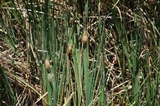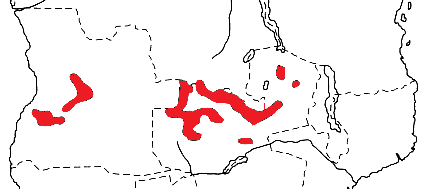Weaver species
Choose different species from drop-down list and press 'Go' button. See Full species list.Bar-winged Weaver Ploceus angolensis
IUCN: Least concern Discovery: 074Categories: nuthatch,
News items about species
Discovery
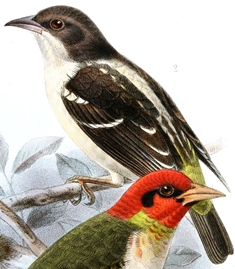
figure from Shelley (1887) 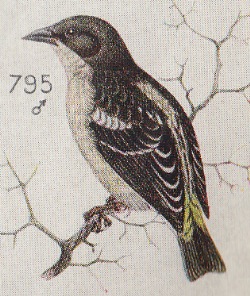
from Mclachlan & Liversidge (1957) 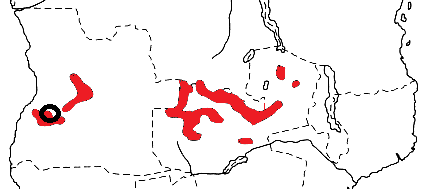
distribution, type locality circled IntroductionThe Bar-winged Weaver was formally described by Jose Vicente Barbosa du Bocage, a Portuguese zoologist and politician. He was curator of the Lisbon Museum, and described several other weavers.The Bar-winged Weaver was collected by Jose Alberto de Oliveira Anchieta, a Portuguese explorer and naturalist, who collected a large number of birds in Angola. In 1867 the Portuguese government hired Anchieta as a naturalist but probably also as a secret agent and informer in the Caconda region of Angola. Anchieta lived in Caconda, explored the area and sent many specimens and letters to his scientific correspondents in Lisbon. Anchieta discovered the Bar-winged Weaver near Caconda, and sent a specimen to the Lisbon Museum. The first illustration of the Bar-winged Weaver was published in Shelley (1887). The second illustration was published decades later, by Mclachlan & Liversidge (1957). Scientific citationSharpia angolensis Bocage 1878 Jorn. Sci. Math. Phys. Nat. Lisboa, 6, p.258 Caconda, Angola.Meaning of namesangolensis, After Angola (Mbundu native name ngola, title of the rulers of the kingdom of Ndongo).First English nameSharpe's Weaver Bird (Layard 1884).Alternate namesAngola Bar-winged Weaver.CollectorJose de Anchieta.Date collectedBefore 1878.Locality collectedCaconda, Angola.Type specimensThe type specimen was in the Museum of Lisbon, before a fire destroyed the museum. |
The above is based on Weaver Wednesday 2, a weekly series about the discovery of each weaver species.
This species text first appeared as
Weaver Wednesday [191] - Discovery [74]: Bar-winged Weaver on 2016-02-10
1. Basic biology
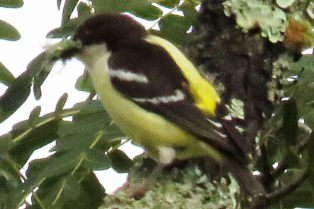
figure from PHOWN 19019 The Bar-winged Weaver is one of several 'nuthatch' (bark-gleaning) weavers, but the Bar-winged Weaver does not overlap in range with any of these.
Distribution. The Bar-winged Weaver occurs in miombo woodland from Angola to Zambia (see map below, based on Birds of Africa). No subspecies are recognised. It is not globally threatened, but is poorly known and uncommon within its relatively limited range. Habitat. The Bar-winged Weaver inhabits mature, tall Brachystegia woodland where it is moist enough to grow copious Usnea lichen on the trees. It also enters Cryptosepalum forest. Food. The Bar-winged Weaver is insectivorous, feeding on mantids, chironomid larvae, beetle larva, beetles and other insects. It forages by creeping along trunks, thin and thick branches covered with lichens and Usnea, continuously inspecting the wood for food. It forages in pairs and family parties, and often joins mixed-species flocks of insectivores. Breeding. The Bar-winged Weaver is a solitary, monogamous breeder. The nest is a roughly spherical ball with an entrance tube of length 30-210 mm hanging down from one side. The nest is constructed of Usnea, fine grass stems and a few narrow leaf midribs. It is suspended below a lichen-covered branch or from several slender twigs, around which the roof of the nest is woven. The nest is sited about 10m above the ground. It is built by both sexes, one bird bringing material, the other inside the nest to weave and shape it. Two eggs are laid and they are turquoise-blue, obscurely flecked and clouded with a darker shade, mostly at the broad end. |
The above is based on Weaver Wednesday, a weekly series about weaver species.
This species text first appeared as
Weaver Wednesday [83]: Bar-winged Weaver on 2014-01-15
2. Breeding facts
| Pair bond Monogamous Breeding season Aug-Nov in Zambia Nest site supended c. 10 m above ground below lichen-covered branches in Julbernardia globiflora or Brachystegia boehmii tree Nest building built by both members of pair Colony size Solitary nester Clutch size 2-3 eggs Egg colour turquoise-blue, flecked and clouded with darker markings, mostly at thicker end Egg size 20.5 x 15.3 mm (Zambia) Incubation no information Chicks and nestling period no information |
Breeding information based on Handbook of the Birds of the World, Vol. 15.
3. Photos of Weaver Nests
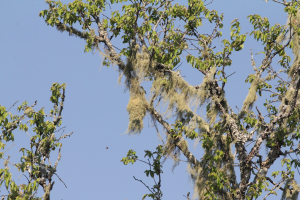 Vm 26738 | 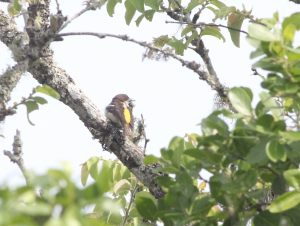 Vm 26737 | 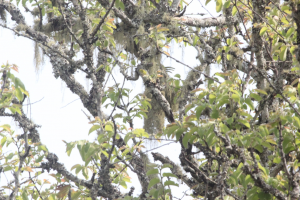 Vm 26736 |  Vm 19019 |  Vm 18647 |  Vm 17403 |
Thumb-nails of most recent PHOWN records - click on one to see its full record
See all PHOWN records for this species here.
PHOWN (Photos of Weaver Nests) provides valuable info on breeding distribution and colony sizes of weavers.
You can contribute by registering and submitting photos at Virtual Museum webpage.
4. Breeding distribution
Google map showing distribution (For species with small ranges you need to zoom in at the correct area to see the range):
yellow blob - range of weaver species; read more about this here.
![]() - PHOWN records with photos
- PHOWN records with photos
![]() - PHOWN records with no photos (Nest Record Cards, other records)
- PHOWN records with no photos (Nest Record Cards, other records)
![]() - Birdpix records
- Birdpix records
![]() - comments on out of range records, or interesting records
- comments on out of range records, or interesting records
![]() - type locality
- type locality
CLICK on the marker on the map to see individual record details.
5. Range changes
Not South African speciesThe above is based on Weaver Wednesday 3, a weekly series about range changes in South African weaver species.
This species text first appeared as
n/a








